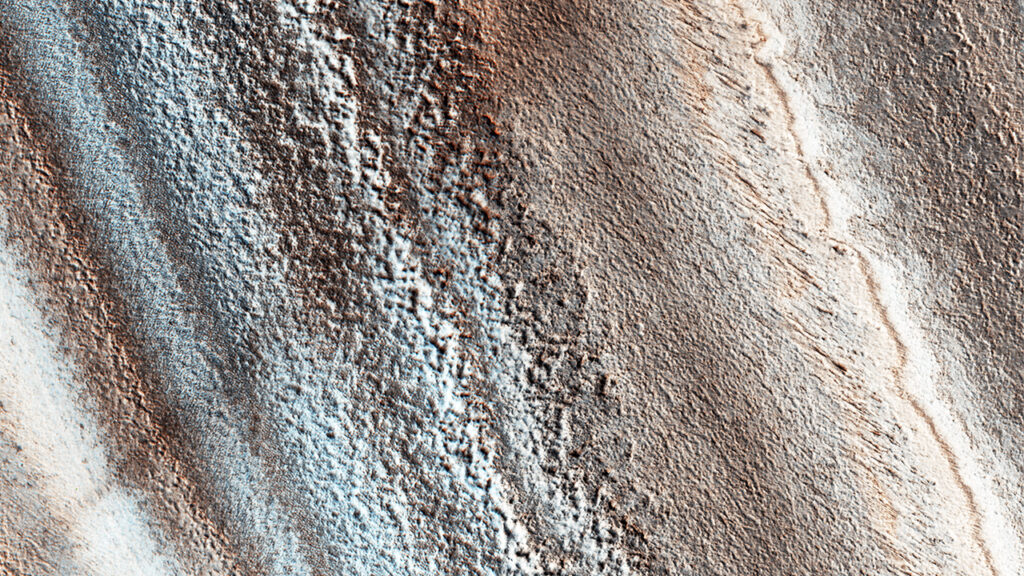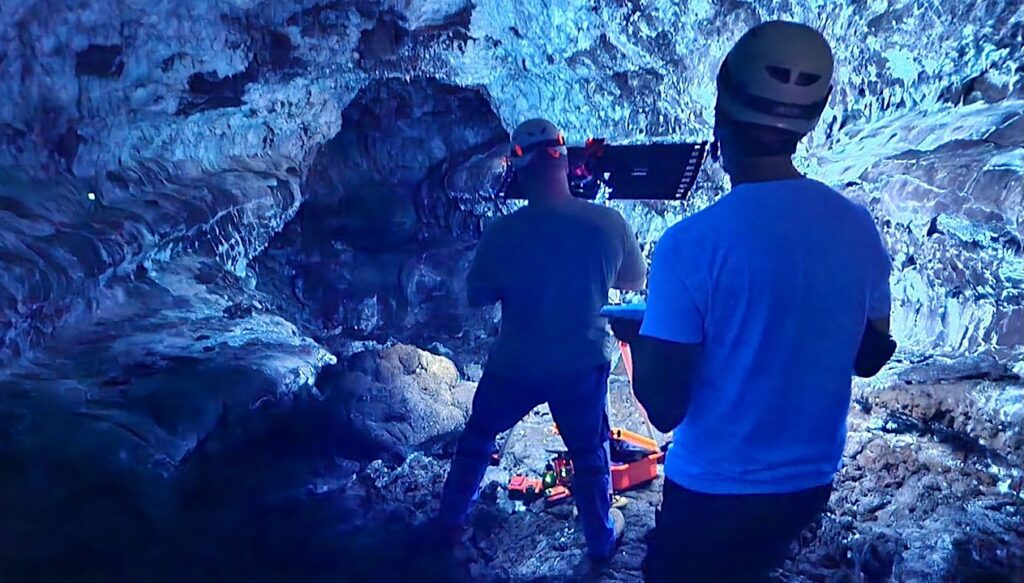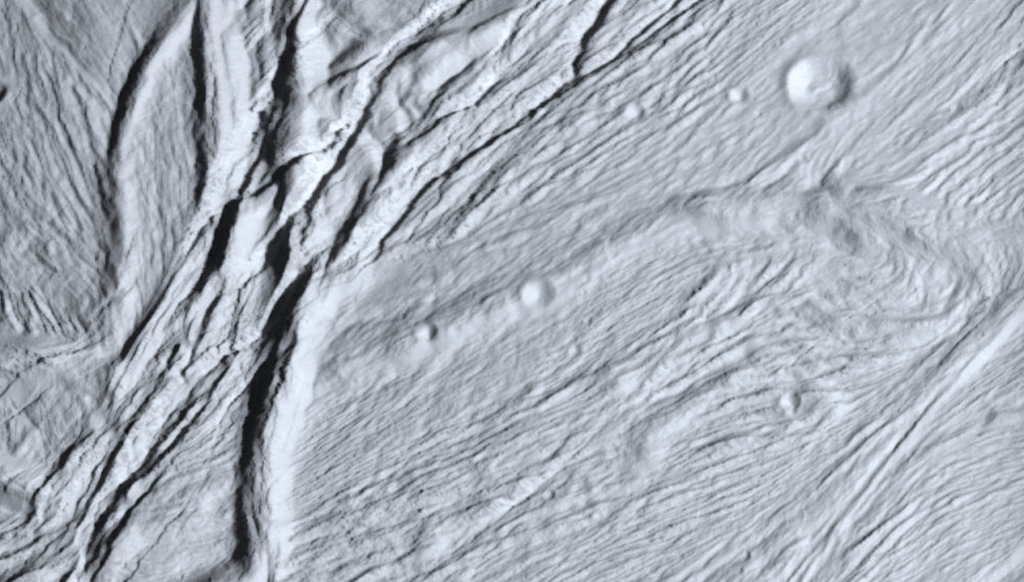UV Irradiation Of Ethanol-containing Interstellar Ice Analogs: Photostability In CH3CH2OH:CO Mixtures
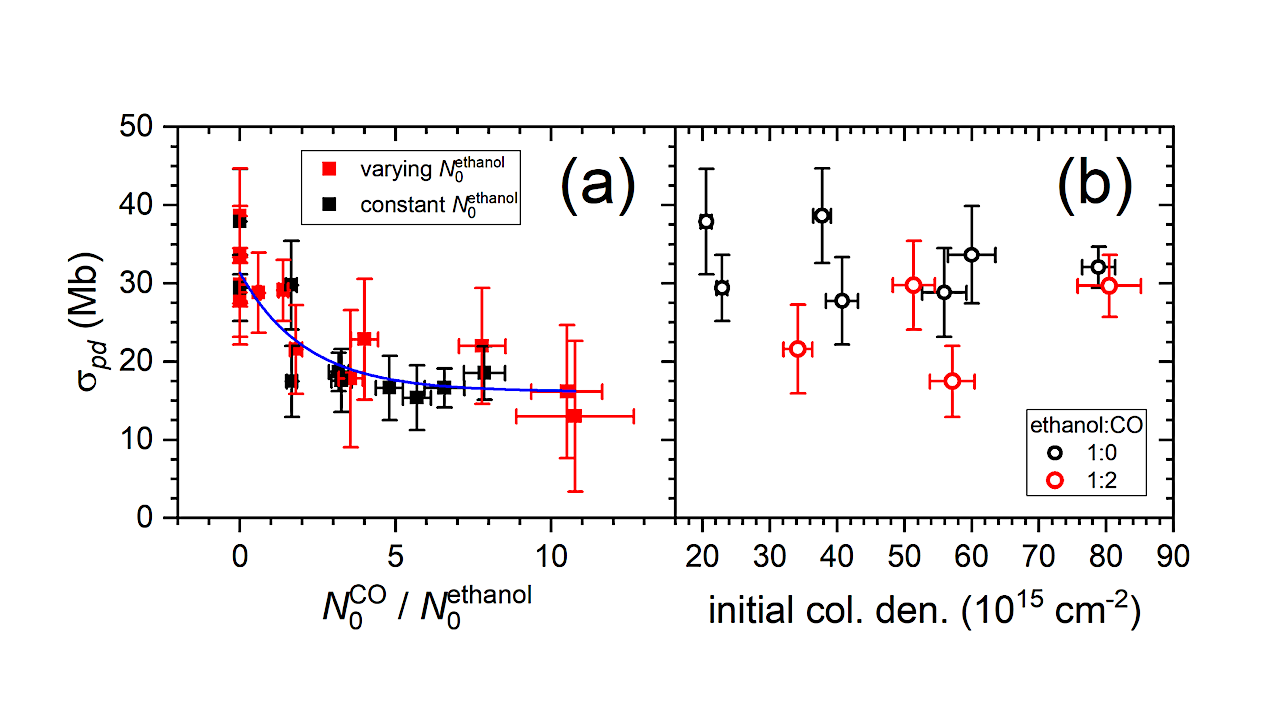
Ethanol (CH3CH2OH) has been detected in interstellar ices within regions associated with the early stages of star and planet formation.
Its solid-phase pathways can lead to diverse conditions that can significantly influence its photostability and -chemistry. Laboratory studies have explored the effects of energetic processing on pure ethanol ices, there is a gap in understanding how ethanol behaves in astrophysically relevant mixed ices.
This proof-of-principle study aims to quantify how the ice composition influences the photostability of ethanol mixed with CO, from both physical and chemical perspectives. It also seeks to highlight the importance of balancing constructive and destructive processes.
Mixtures with ethanol to CO ratios ranging from 1:0 to 1:11 are exposed to UV irradiation from a microwave discharge H lamp under UHV conditions, at 16 K. The evolution of the solid phase is tracked using reflection-absorption infrared spectroscopy, and changes in the gas phase are monitored with a quadrupole mass spectrometer. Temperature-programmed desorption experiments aid in the identification of infrared spectral features.
A radiative-transfer model has been developed to account for the influence of ice composition on the effective photon flux. The model reveals that, during later stages of irradiation, photoproducts play a significant role in the absorbing of incident photons, highlighting the complex cascade of processes initiated by single-photon absorption in ethanol-containing ices. By evaluating photodestruction cross sections as a function of the initial ice composition, we found that CO exerts a stabilizing effect on ethanol.
For highly dilute ethanol:CO mixtures, representative of astronomical ices, the photodestruction cross section of ethanol is estimated to ~1.6E-17 cm2/photon after correcting for the effective absorbed UV fluence of the studied interstellar ice analogs.
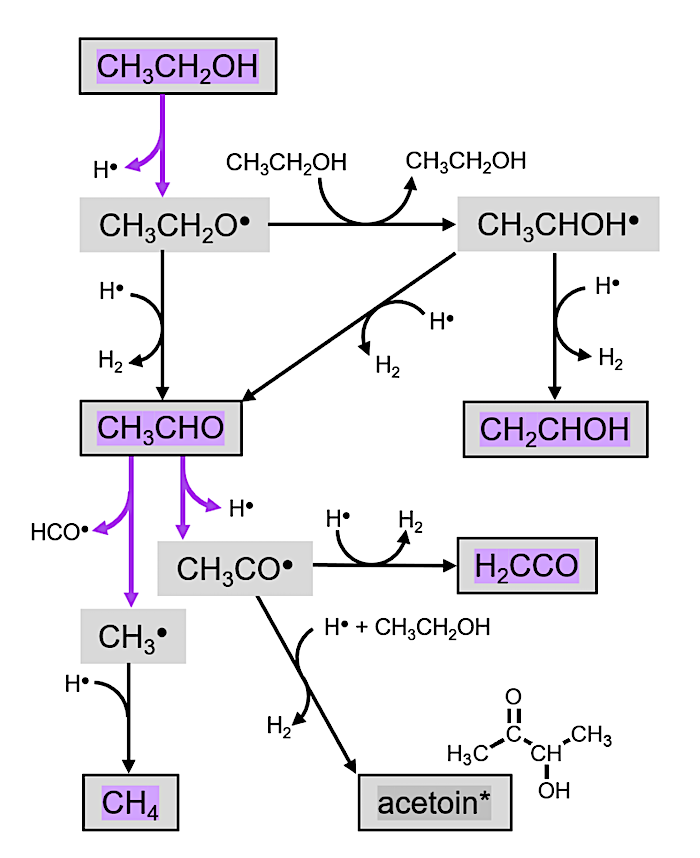
Partial reaction diagram reflecting processes in the pure ethanol photolysis experiments. Purple arrows indicate processes induced by photon absorption. Highlighted species have been identified in the RAIR spectra; those with boxes around them are considered to be “stable,”, i.e., do not react further unless exposed to another reactive species. Acetoin is highlighted in gray due to the tentative nature of this assignment. — astro-ph.GA
J. A. DeVine, J. Terwisscha van Scheltinga, S. Ioppolo, K.-J. Chuang, E. F. van Dishoeck, T. Lamberts
Subjects: Astrophysics of Galaxies (astro-ph.GA)
Cite as: arXiv:2510.27422 [astro-ph.GA] (or arXiv:2510.27422v1 [astro-ph.GA] for this version)
https://doi.org/10.48550/arXiv.2510.27422
Focus to learn more
Submission history
From: Thanja Lamberts
[v1] Fri, 31 Oct 2025 12:23:00 UTC (1,954 KB)
https://arxiv.org/abs/2510.27422
Astrobiology, Astrochemistry



